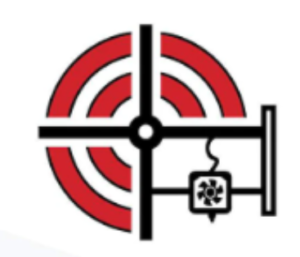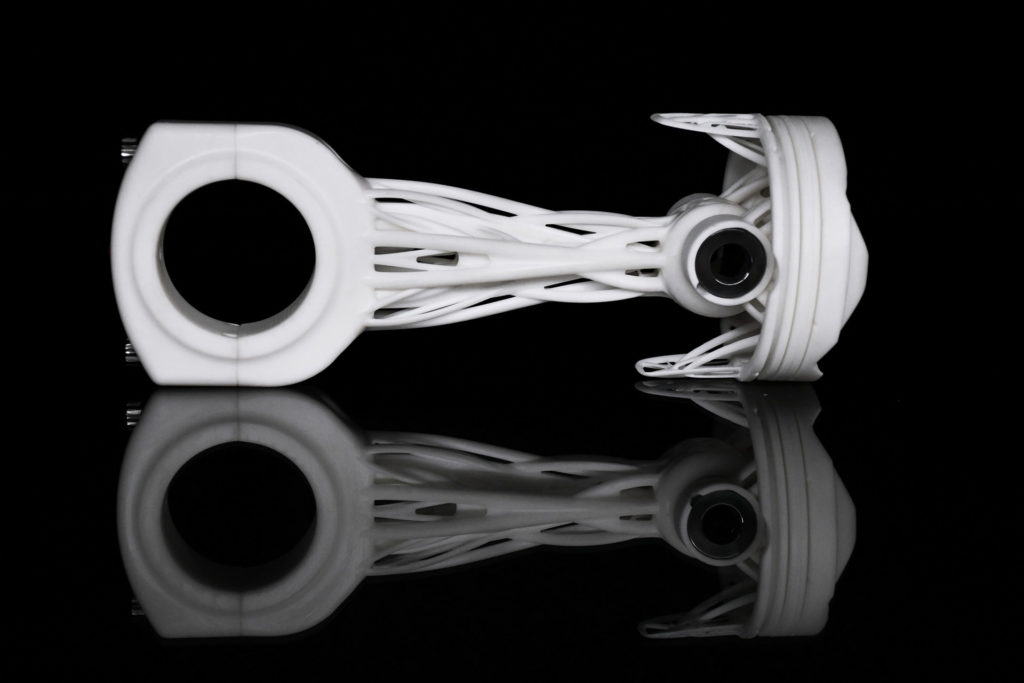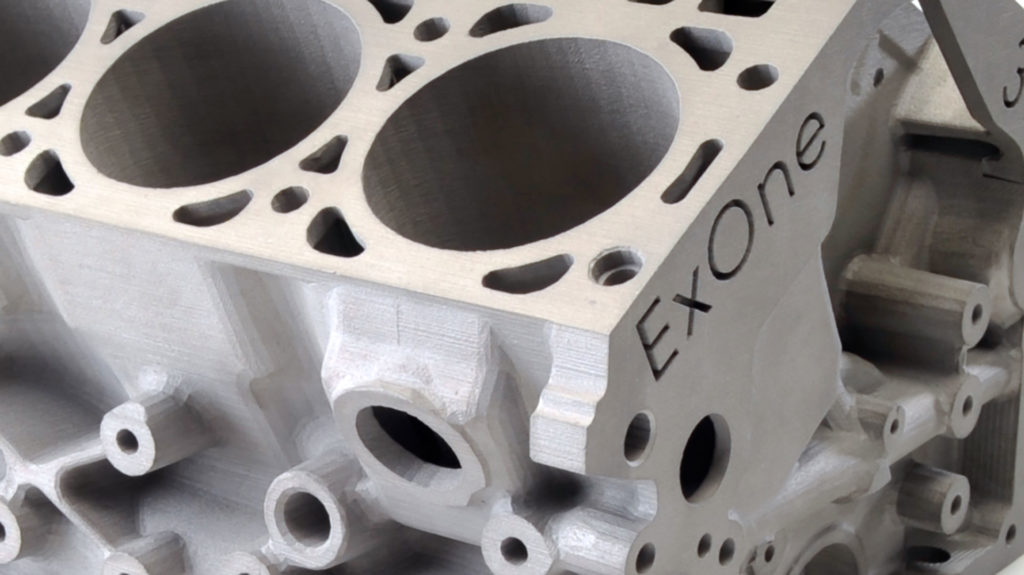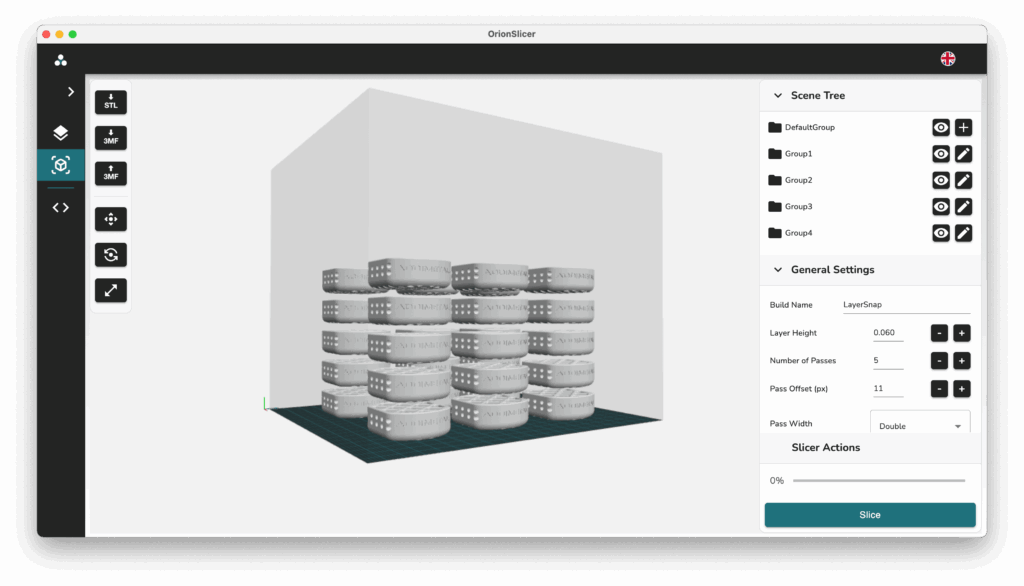In the classic tune Shook Ones Pt II by Mobb Deep, we get introduced to “all of those who wanna profile and pose,” but when the going gets tough, they turn out to be “featherweight” when “living the life…of diamonds and guns.” Amidst binder jet turbulence, we looked at the collective illusion that created the current situation, binder jet as a technology, and potential scenarios where it would work well. Now we will look at certain binder jet stars & hopefuls who are not shaken by the current situation. Or are they?
As well as binder jet companies, we will include some others with distinct jetting technologies that nonetheless rely on similar principles and have an offering that would probably be competitive with binder jet. I know donuts are not bagels, but if you’re buying just one, we should compare them.
Progress Group
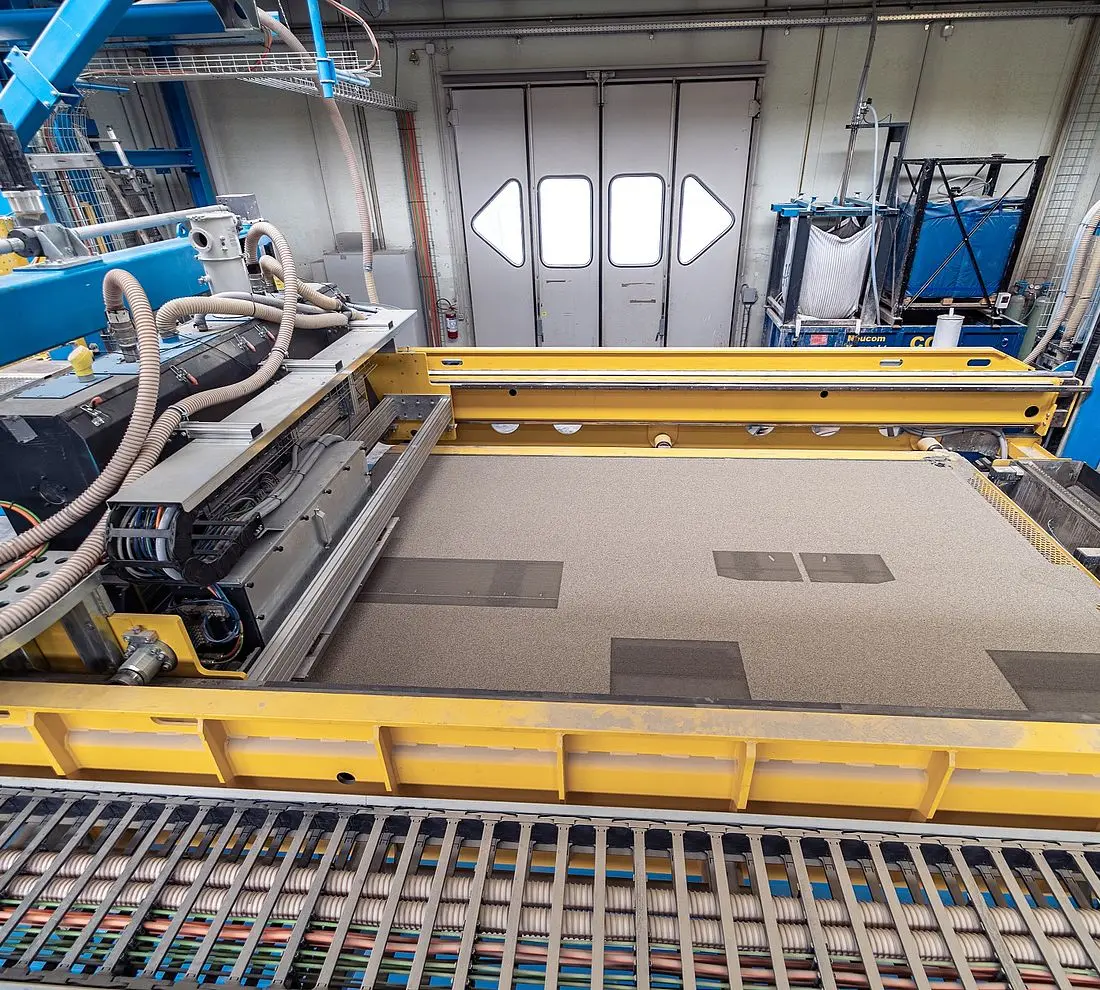
Large-format precast concrete production. Image courtesy of Progress Group.
Progress is a global player in the precast concrete industry. They’ve developed a process, Selective Paste Injection (SPI), which deposits a paste binder into aggregate. One of the most exciting aspects of the technology is that the company says that size is “only limited by the installation space.” Build boxes can be ejected, and the machine is set up to print continuously. For formwork and facades, SPI could be an in-factory production process that can, with high fidelity, detail, and throughput, make many concrete components. When we talk about binder jet, we often focus on metals, PMMA (polymethyl methacrylate), or sand-based processes, but we’d be remiss in not thinking much broader about the binder jet opportunity. SPI is impressive, both in its technical aspects and in its facade elements and architectural components. This could be a good money earner for the group and people who buy its machines. We have yet to see the market react to the product, and we will need to see if many firms buy the company’s system. If it does, Progress is sure to build this into an even more progressive technology.
D3AM
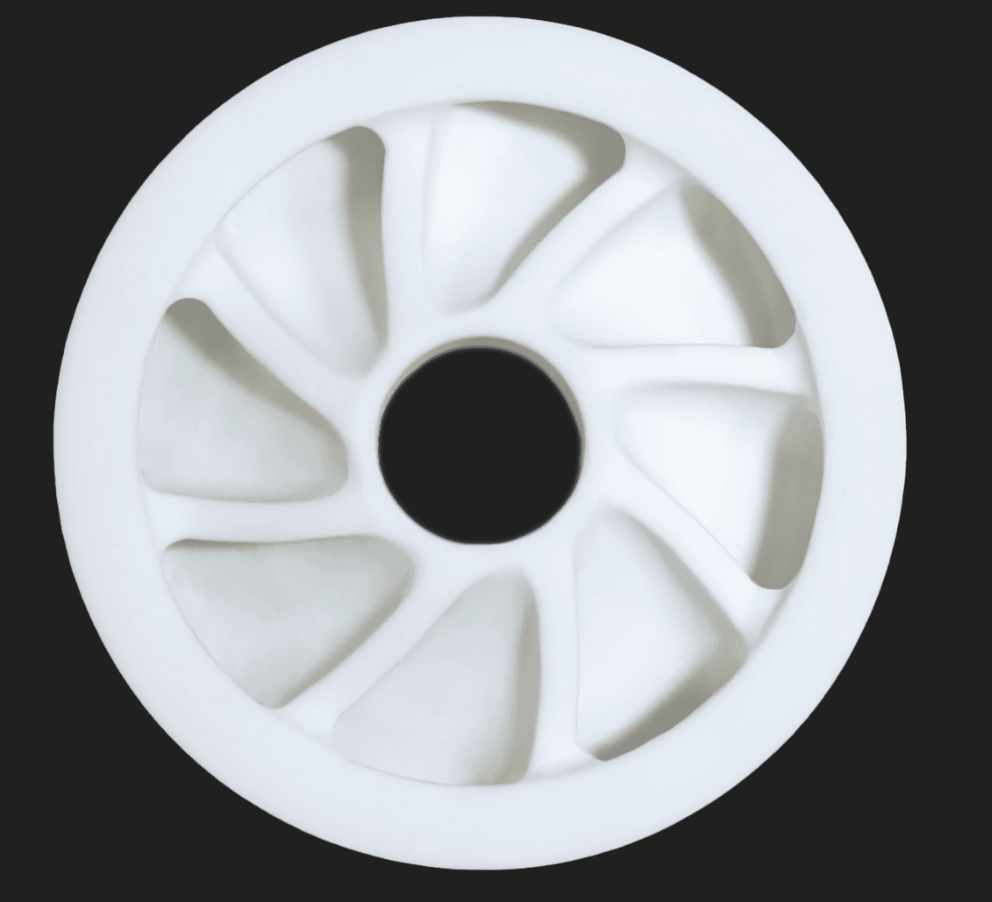
Printed Impeller out of Aluminum Oxide (Al2O3) used for thermal or abrasive applications in pumps. Image courtesy of D3-AM.
Durst spin out D3-AM directly jets water with suspended ceramic particles. It doesn’t use a binder, and debinding is not needed, since the feedstock is supplied not in powder but in liquid form. The company has its own print head made specifically for water-based ceramic suspensions. The company has been working on the technology for over 15 years. This refinement and variation of binder jetting shows us that the possibilities are much broader than we may have considered previously. At the same time, jetting and binder jetting are not easy technologies to develop for. D3 AM focuses on technical ceramics. This is a niche market, but in making thermal components, tool heads, and high-wear components, there is a considerable overlap with additive manufacturing.
The most complex parts are often the hardest to make. In this case, additive is a real solution to making components at scale. High-value and usually critical technical ceramics have great potential as a business for additive manufacturing. Durst is a company that started in photo printing, so they have seen successive waves of digitization and the displacement of entire industries. The family-owned company has around $150 million in revenue. It could have the vision and staying power to see this through. Roll-to-roll print systems are an area that will see a lot of competition as well as continued investment by large, entrenched firms. Durst may therefore not have enough resources to sustain D3-AM indefinitely.
Xjet
Xjet pioneered direct material jetting for ceramics and metals. The company has refined its offering, and there were some bumps along the road. The hope for direct jetting has always been that it eliminates explosive powders, could offer better surface finish, and could produce denser parts. At the same time, powder-free workflows could be an advantage in medical settings, offering less contamination. Xjet has done a lot of the heavy lifting in pushing the technology and improving it. The company will need a second wind to push harder against the competition, however.
Ricoh
Ricoh’s all-out assault on 3D printing included several technologies and a service. The firm now seems to have focused, for the most part, on 3D printing for medical models. Its healthcare push seems sensible, but we do not know what it means for Ricoh’s binder jet offering. Focused on aluminum thermal management, the potential is huge. Cold plates, heatsinks, heat exchangers, and motors are all parts that are needed in volume. Improved textures, channels, walls, and design could lead to remarkable performance improvements. Conformal, lower part count, faster time to market, and lower weight could also drive adoption.
One little Apple part could revolutionize Ricoh’s technology. But, how do consumer electronics firms rate the technology’s maturity and part cost? That would depend on a lot of factors. For now, it seems like more niche IC packaging, high-end technology, and more custom lower-volume devices would be the sweet spot. The issue here is always going to be product-market fit and being able to convince that first customer to publicly go into production with an advantageous part. Ricoh has deep inkjet experience, a long-term focus, and by now, considerable AM expertise, but will it go the distance?
Colibrium Additive
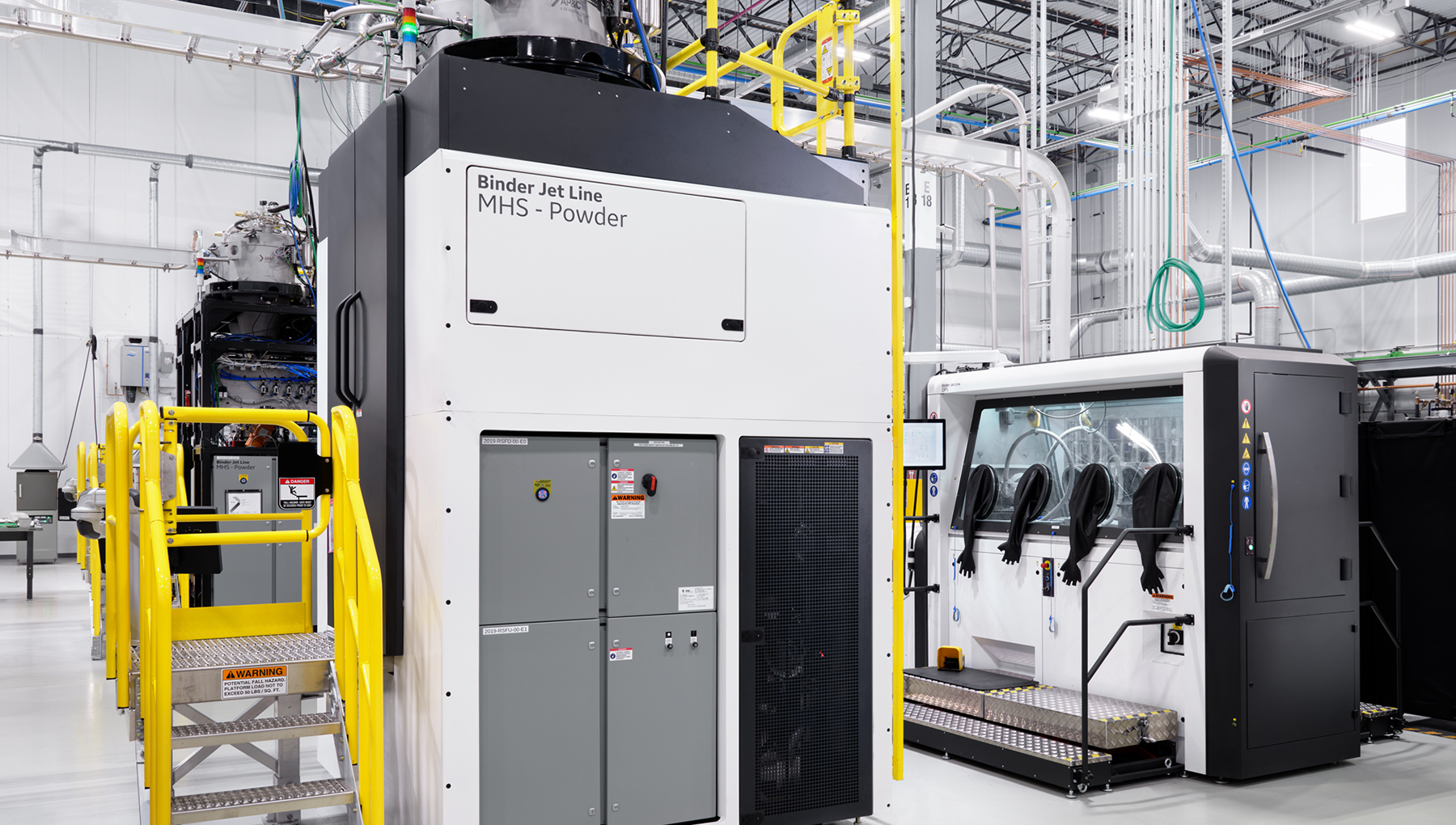
The MHS-Powder Binder Jet Line. Image courtesy of Collbrium Additive.
Colibrium has been working on binder jetting basketball-sized parts for several years now. Now on its Series 3 machine, they have an impressive, commercially available solution. They specialize in large parts, up to 23 kilos, installations of dozens of machines, and true low cost. The product appears mature and ready to go to the next level. Is Colibrium ready, though? The company’s parent, GE Aerospace, seems rather aloof to the 3D printing division. Especially about selling things. With revenues of $38 billion, the firm can afford to invest deeply into developing this technology for aerospace and beyond. GE Aerospace has rolled out additive for turboprop, jet engines, and beyond, but is it committed to the technology? For a lot of people on this list, staying and thriving in additive is a question of “can they afford to stay the course,” while for GE it is a question of “do they want to.”
HP
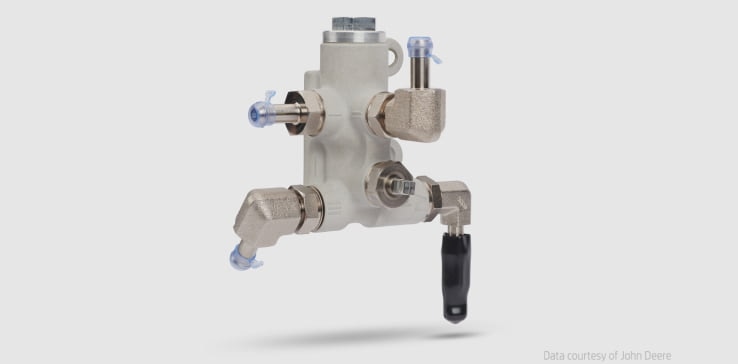
John Deere uses HP Metal Jet to 3D print valves, boosting productivity, sustainability, and performance in extreme conditions. Image courtesy of HP.
Can binder jet survive a Desktop Metal exit? I think so, but if HP left, it would be difficult to recreate the corporate groundswell to promote the technology broadly. Other players would be left with a limited technology sale that would be decided on a case-by-case basis, more RFP (request for proposal) than revolution.
HP has done well in binder jet and is now busy creating a mature solution set for customers. What HP is good at is using its heft and digitization expertise to motivate large firms to consider the technology. HP is also skilled in application development and working with firms to make solutions around its technology. I love the Schneider Electric case with components for electronics and the John Deere bypass manifold. These are very well thought-out, very functional products with distinct costs and other advantages for customers. HP is clearly hunting for solid applications that could sustain its business. If the company is left to its own devices, it could find them. While its offering is solid, we don’t know yet if the company is truly committed to Metal Jet, which could hinder adoption.
3DEO

Printed part at the RAPID 2023 event. Image: Sarah Saunders.
3DEO has raised over $39 million, and surprisingly, a lot of this funding comes from Japan through the likes of Mizuho Bank and Seiko Epson, as well as the National Science Foundation, FusionX Ventures, and Alpha Edison. The company commercializes its own binder jetting process, which it calls Intelligent Layering, through a manufacturing service. The innovation is in using a micro end mill to mill down edges. I love the 3DEO business model and like how they’re investing in capacity, volume, and client engagement over marketing. This, to me, is by far the most logical business model to pursue, especially given the complexities of binder jet. If 3DEO manages to find the right customers by drilling down into their capabilities and markets, they could thrive. It has, however, been difficult in binder jet to find the right customers and sell to them. On the one hand, buying some parts is faster and less risky than acquiring a machine, but on the other hand, finding the people with the exact right needs could still be too inefficient. I love the speed that this business could have, but I worry about its ability to continuously find streams of parts to fill its capacity at the right margins.
Sinterjet
Sinterjet launched an affordable $65,000 160 x 60 x 60 mm build volume binder jetting machine and then a P45 unit aimed at the jewelry market. This is a great market to target, and the team has tried to make a system that minimizes material contamination, automatically collects powder, and skips debinding. It could let clients swap between gold, platinum, and silver more easily than other systems. With a novel form factor and smart improvements, the Turkish team seems intent on making something that could be a chair-side, lab, or production device for jewelry, research, or luxury goods generally.
Given the significant role Turkey plays in the jewelry industry, they may be able to find partners there that others can not. Again, we don’t know if Sinterjet has the heft to push the system into the often cost-conscious jewelry industry. But there’s a lot of value here for clients. Sinterjet is a part of Sintertek, which makes powder bed fusion systems as well.
Sintertek’s CEO, Eren Tigrel, told us that,
“We truly believe in Binder Jetting and the future it holds. It is one of the most scalable additive manufacturing technologies. It delivers incredible detail and surface finish with minimal post-processing. To unlock its full potential, we need more people involved, developing new use cases, refining processes, and pushing boundaries. At Sinterjet, our mission is to make Binder Jet more accessible. We believe innovation grows from the ground up.”
Working with clients and understanding the workflow and system that they need could give the firm a real advantage.
EASYMFG
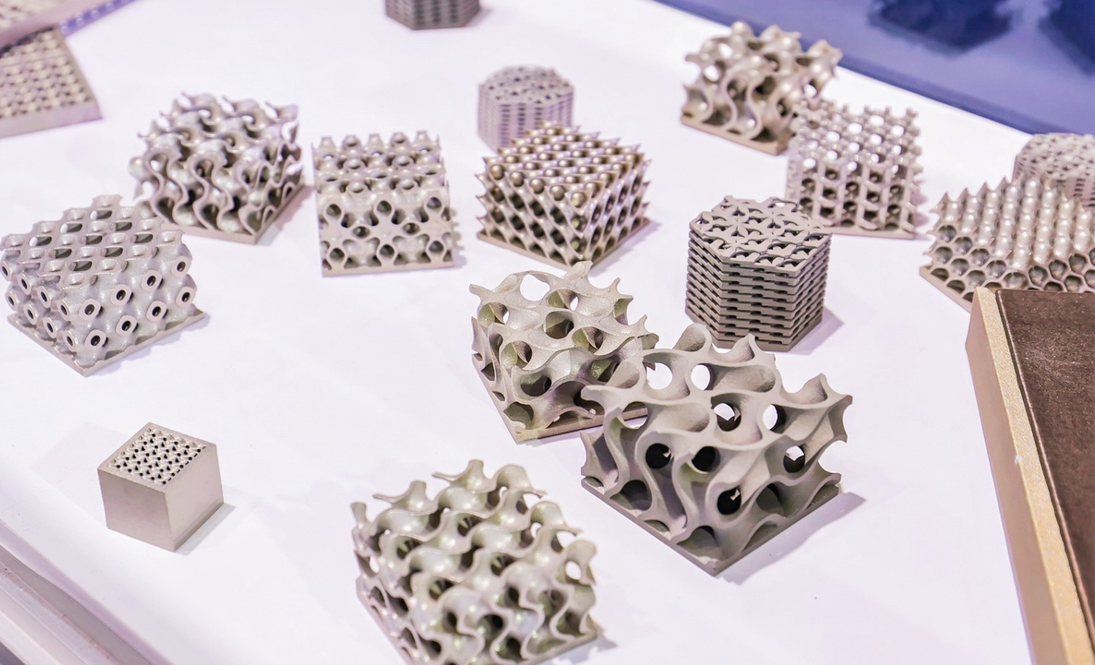
EASYMFG binder jetting 3D printing for many applications. Image courtesy of EASYMFG.
EASYMFG is probably the most well-known Chinese binder jet company, owing to their publicity early on. The company generates approximately $9 million in revenue, primarily in China. With a full lineup of printers and post-processing equipment, it has a complete offering. Midway through development and after launching a family of products, the company stopped all sales to implement a newer, more robust print head technology. This is a sign of decisiveness, drive, and logic that bodes well for the firm.
The company is improving its offering all the time and seeking maturity, and is sure to be a real competitor going forward. With the development of room temperature binders, quicker turnaround times, and better packing densities, the company seems to be on the right path. But, its 13-year journey may mean that Chinese funding sources may prefer younger companies to invest in.
Cerawei
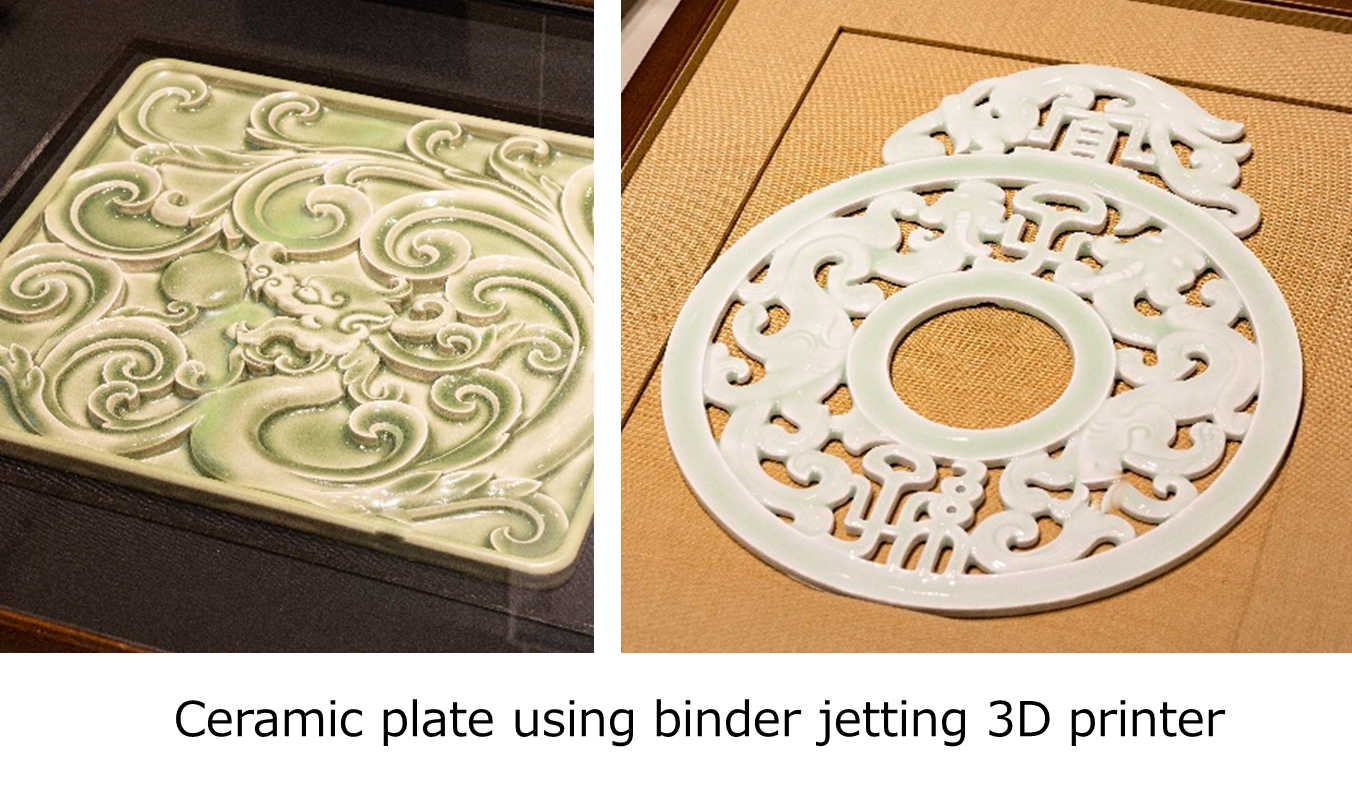
A 3D printed ceramic plate. Image courtesy of Cerawei.
Cerawei is a joint venture between AGC Inc., AMSKY Technology, Roland DG Corporation, and Jingdezhen Changnan New Area Zhongxi Investment Partnership. AGC is a ceramics materials supplier, AMSKY makes (or wants to make?) an inkjet printhead for sand casting, while Roland is a huge producer of printers, plotters, and the like. The Chinese-based company focused on ceramics, namely industrial, ornamental, and household ceramics. Rather than focusing on technical ceramics, this is about parts at scale for industry. The partnership seems formidable, but it has been really quiet around Cerawei for a year or two. Inkjet has been used at scale in the ceramics industry, but I do not know if we can get the part cost needed to make more 2D and 3D printed shapes work in ceramics.
GUANGDONG FENGHUA ZHUOLI TECHNOLOGY
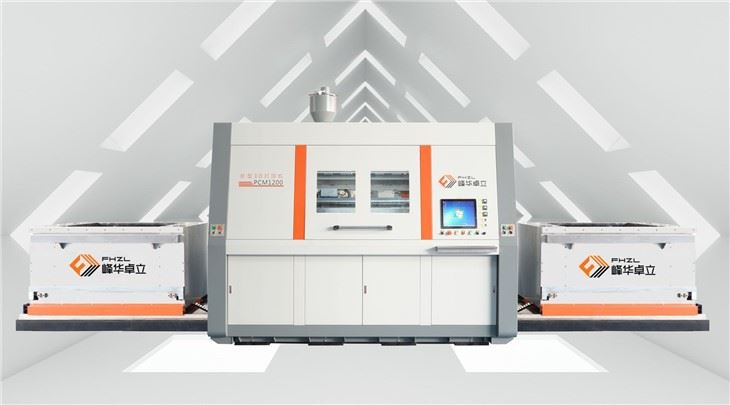
FHZL PCM2200 3D printer. Image courtesy of FHZL.
FHZL is a service, development partner, and OEM of sand and metal binder jet machines. In development for over 20 years, FHZL is focused on sand printing and is a kind of China’s answer to ExOne. The company has deep experience in taking engines, rails, and other parts and turning them into sand molds or final parts. The company uses huge lines to make parts for clients and seems to focus on this business. Given the immense demand in China for sand casting parts, chances are that this company will continue to expand in this business and make furan, quartz, and other specific versions of its machines.
3DPTEK AFS
AFS is a supplier to a lot of China’s automotive industry. Specialized in sand molds, the company has a line of sand molds and core printers from medium-sized units to very large industrial lines. The company also has metal and ceramic binder jetting systems, as well as wax and LPBF. They probably white label others’ systems. As well as selling systems, it offers sand printing and casting as a service.
ExOne
Binder jet pioneer ExOne is now owned by Anzu Partners. The company has been neglected under Desktop Metal, and hopefully, it will get the funding it needs from Anzu. ExOne has always made good products for its foundry partners. But revenue has always been clunky, with a sale moved here or there, messing with quarterly revenues. This, mixed with some financial topsy turvy, made the company unloved on Wall Street. ExOne will still have very long sales cycles and have to deal with customers who have been doing the same process for like 5,000 years. However, a focus on local manufacturing, tariffs, and alternatives for casting and forging in the U.S. may enable the firm to perform very well. The company could also do more to commercialize hand tools, ornamental products, and design products to grow.
Voxeljet
Voxeljet is in a bit of a holding pattern and looking to restructure itself. The German firm is a leader in sand and PMMA casting. Making really large systems, continuous systems and generally very productive solutions the company was a pioneer. But, it essentially run out of funding at the wrong time. Selling to foundries is always going to be difficult. But, within the rearming Europe and the US industrial base discussions, a technology company that speeds up casting, forging, and general metal part production could do very well indeed. Someone needs to step in for Voxeljet to do well, but that company could find itself with a mint if the reindustrialization of Europe occurs. If this takes longer than expected and a suitor remains unfound, then the company will fail.
DigitalMetal
Still part of Markforged and therefore Nano Dimension, DigitalMetal probably has the best production systems for series parts in medical, luxury goods, and industrial components in binder jet. The company has built up international clients who have been using their systems intensively over the decades. The uncertainty around Nano Dimension is, of course, hurting the brand. In new hands, this could very well be a very successful company.
Concr3de

The Armadillo White binder jetting system. Image courtesy of CONCR3DE.
CONCR3DE has an open parameters binder jetting system that would seem to be great for testing. It also has specialized systems, such as one for silicon carbide parts. It has a sawdust printer and has partnered with Tethon on materials, and has its own special industrial waste-derived cement binder. That lets some of its parts be made without sintering, just drying. For these kinds of applications, powder tolerances are key, which limit but at the same time allow a wide range of stone-like powders to be used. The company has done little to commercialize itself, however, and will need more oomph and an installed base to become more prominent. Just having a good research unit could be an amazing business if binder jet grows more.
Addimetal
French industrial binder jet firm Addimetal has its own software, which gives clients access to process parameters (you can even use your own binder) on a $200,000 machine with 200 x 200 x 200 mm build volume aimed at medium volume binder jet production applications. This very much is the type of open, functional production unit that a lot of clients would actually want. Launched in 2024, we’re unsure now if Addimental has been able to get the funding and installed base it needs to sustain itself.
Mantle
Mantle is focused on tooling, tool steels, and the tooling market. This tight focus gives them a much more market-aligned product than everyone else. It knows it needs to understand tooling, understand the market of tooling, and the divers there. This combination with a milling-assisted paste binder jet process makes it much easier for the firm to be excellent and focused. Strategically, Mantle is an amazing play, but will it have the wherewithal to grow in a tough market for startups?
Tritone
Tritone has a horizontally rotating carousel that transports six build platforms to different stations. Some platforms fill cavities with paste through extrusion, while others dry and inspect the platform. Then the build is demolded, debound, and sintered in one step. By doing this, largely inside a machine, it hopes to automate a lot of tasks, process efficiently, and produce parts at scale for comparatively little cost. Something very similar to Tritone is exactly the technology we need to make millions of parts. Tritone launched in 2019 but is now not widely known. It will need to work harder to find revenue and bulk up to push a technology, working hard like a single Salmon going upstream.
B-Jetting
B-Jetting combines a lot of binder jet expertise with an open parameters education and R&D binder jet unit. The company is one of the very few firms that act as a connecting tissue in binder jet. They could train you, assist with servicing your machines, and help you get started with binder jet. There are far too few firms like it in binder jet. More educators, trainers, and consultants could help the industry do much better.
ComeTrue
Taiwanese firm ComeTrue makes a color binder jet printer that makes gypsum full-color parts. Applications for this technology have been hard to find traditionally, although it always seems so close to many consumer products. Maybe the company can grow by developing a new consumer-friendly personalized gadget, something that has eluded many who have tried.
3D Systems ColorJetPrinting
3D Systems‘ ColorJetPrinting is a trail-blazing technology in full color 3D printed components. Aimed at the architectural and prototyping market, part strength issues have always been the Achilles heel of this technology. An evolution of the Zcorp offering, the printers are now polymer-based and not generally used for ceramics. The technology has a market in prototyping, but is not being expanded beyond it.
Services
There have also been far too few services in binder jet; this has meant that it has been too difficult for companies to engage with the technology. By lowering barriers and letting people get parts with less risk, services are essential to expanding binder jetting. Azoth3D has managed to print parts for automotive firms, offering an interesting MRO (maintenance, repair, and overhaul) model that allows for direct shipping of replacement parts for immediate installation in the next build. Erpro is a service bureau that has won the trust of many leading French luxury goods companies. They are excellent and could significantly expand binder jetting in luxury goods. TriTech specializes in metal binder jetting as a service. DSB offers MIM (metal injection molding) and binder jet and porous metal parts, which could be a great combo for some processing applications. Zoltrix is expanding in Chinese industrial markets using HP machines. Indo MIM is probably the most essential player in binder jet. The Indian firm has made significant engagement with the 3D Printing industry, aiming to industrialize Desktop Metal and HP binder jet solutions. It sells materials, is active in bound metal, and has a diverse and prestigious global partner base. If IndoMiM continues to invest in additive manufacturing, it will likely be gradually integrated into the manufacturing space.
We can see a lot of players in binder jet. How committed are they? How many will still be around in five years? How many could really grow? There is a real opportunity for one well-capitalized firm to dominate the binder jet market. Continued investment should see a healthy business emerge. One firm could essentially knock out much of the industry, something unthinkable in LPBF, for example. Or we could have a diverse base of firms all building the technology together. I’m not optimistic about all these firms’ chances and think that many will quit the industry. But, there is a real opportunity to, with enough patience, do exceedingly well in this expanding space.
Subscribe to Our Email Newsletter
Stay up-to-date on all the latest news from the 3D printing industry and receive information and offers from third party vendors.
